The first publisher to break Ace’s monopoly in komiks publishing was Silangan Publications. In early 1950, it published the Silangan Komiks, the fourth komiks magazine in the Philippines, after Halakhak Komiks (1946), Pilipino Komiks (1947), and Tagalog Klasiks (1949). The Silangan Komiks was a few months older than the Hiwaga Komiks.
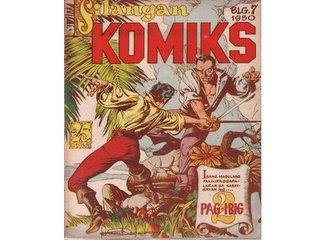 Silangan Komiks with a superb cover by Francisco V. Coching. Coching is well-known for his dynamic composition, which became the standard style in those days. Coching was often commissioned by komiks publishers to grace their covers even though Coching himself did not illustrate any of the stories inside them. At that time, Coching commanded the highest pay among Filipino artists, so that small-time publishers could not afford to hire him to illustrate for their regular komiks-nobelas. They were, however, contented to just having him as their cover artist.
Silangan Komiks with a superb cover by Francisco V. Coching. Coching is well-known for his dynamic composition, which became the standard style in those days. Coching was often commissioned by komiks publishers to grace their covers even though Coching himself did not illustrate any of the stories inside them. At that time, Coching commanded the highest pay among Filipino artists, so that small-time publishers could not afford to hire him to illustrate for their regular komiks-nobelas. They were, however, contented to just having him as their cover artist.
Edited by Ben Cabailo, Jr., the Silangan Komiks' first issue appeared on March 15, 1950, and was afterwards published on a regular forthnightly basis. It boasted some of the youngest and most talented Filipino illustrators at the time: Nestor Redondo, Alfredo Alcala, Nolasco "Noly" Panaligan, Elpidio Torres, and Antonio de Zuniga. Of particular interest among the nice stories from Silangan Komiks was Prinsipe Ahmad, Anak ni Aladdin, written and illustrated by the youthful Alfredo P. Alcala. 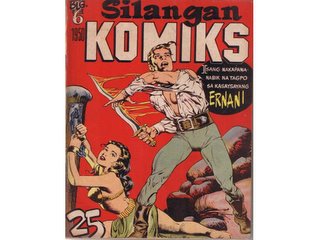 Another rare issue of the Silangan Komiks, this time with cover art by Nestor Redondo. During those times, a Redondo cover art was a sure way to make the komiks saleable.
Another rare issue of the Silangan Komiks, this time with cover art by Nestor Redondo. During those times, a Redondo cover art was a sure way to make the komiks saleable.
A few weeks after the first issue of Silangan Komiks, another komikbook entered the komiks scene in 1950, the Aksiyon Komiks, published by Arcade Publications. Like all others before it, Aksiyon Komiks was published forthnightly, with writer Eriberto Tablan as editor, and with Alfredo Alcala and Virgilio Redondo as chief illustrators. 
An extremely rare copy of Aksyon Komiks, with cover art by Alfredo Alcala for a komiks-nobela ny Jose L. Santos, Haring Kobra
Since artists and writers were hired on a freelance basis, it was possible for them to contribute to rival publications. Hence, the indefatigable Alfredo Alcala worked as artist in many of these early komikbooks.
A few weeks after Aksiyon Komiks’ first issue, also in the year 1950, three more small time publishers entered the komiks publishing competition: F.J Quioge Publications, Social & Commercial Press, and All-Star Publications.
F.J. Quioge Publications published the first issue of Bituin Komiks sometime in April 1950. Edited by Kulafu creator Francisco Reyes, with Mauro Malang Santos and Menny Martin as his assistants, the Bituin Komiks was issued in an irregular basis.

An extremely rare copy of Bituin Komiks. This is one of the only two issues of Bituin Komiks found in the author's collection.
Owned by Dona Beatriz Guballa, known as "Dona Bating", the Social and Commercial Press later changed its name into Bulaklak Publications. It published three komikbooks: the Bulaklak Komiks in August 1950, Manila Klasiks in 1952, and the Extra Komiks in 1953.
 A rare copy of Manila Klasiks with a superior cover art by Tony de Zuniga. Author's collection. As an artist, De Zuniga was like a chameleon, often changing his styles to match his writer's ideas.
A rare copy of Manila Klasiks with a superior cover art by Tony de Zuniga. Author's collection. As an artist, De Zuniga was like a chameleon, often changing his styles to match his writer's ideas.
All Star Publications meanwhile published the Pantastik Komiks in October 1950, also edited by Ben Cabailo Jr. This was a sister piblication of Silangan Publications which issued Silangan Komiks (FOOTNOTE: I had an initial feeling that Silangan Publications and All-Star Publications were owned by Ben Cabailo although the editorial box did not mention the name of the owner. But in a casual conversation with Frank Redondo (younger brother of Nestor and Virgilio Redondo) sometime in 2004, he confirmed to me that he remembered it was indeed Cabailo who owned these komikbooks.) Pantastik Komiks#2 with cool cover art by the great Francisco V. Coching. This mermaid komiks-nobela by Hector Rey Arkanghel predates Mars Ravelo's Dyesebel.
Pantastik Komiks#2 with cool cover art by the great Francisco V. Coching. This mermaid komiks-nobela by Hector Rey Arkanghel predates Mars Ravelo's Dyesebel.
Most of these publishers had very small capital, had no printing presses of their own, or lacked the appeal to attract big advertisers. No wonder many of them died a natural death after only a few issues. None of them had equalled the success Ace’s komiks.
Mabuhay Komiks #10 with cover art by Bes Nievera for Teodoro Virrey's classic komiks-nobela, "Borong-Borong".
In fact by the end of the 1950s the Silangan, Bituin, Aksiyon, and Pantastik Komiks had ceased publications. With very little capital and lack of efficient distribution network, these komikbooks suffered the same fate of the Halakhak Komiks. The only saving grace for these komikbboks was that they contained some of the more visually appealing artworks by some of the budding artists at that time, like the Redondo brothers, Alfredo Alcala and Hugo Yonzon.
Aksiyon Komiks, for instance, had some of the greatest komiks novels of its time, like Mario del Mar’s Prinsipe Amante, as superbly illustrated by Alfredo Alcala, and Ang Kamay ni Hugo by Nolasco Panaligan. For a time the Aksiyon Komiks’ Prinsipe Amante series became a serious threat to Pilipino Komiks’ popularity. At about this time, however, a young Mars Ravelo started the popular Darna series, and Prinsipe Amante and Darna became the two most popular series being anticipated by Filipino komiks readers.
The komiks industry continued to grow. Old publishers were closing but more new ones emerged in their place. Some komiks changed ownerships but they continued to be issued.
 Atomik Komiks #1 with a gorgeuos cover by Sir Fred Alcala. What a cool title this komiks has!
Atomik Komiks #1 with a gorgeuos cover by Sir Fred Alcala. What a cool title this komiks has!
By 1954, there were at least 20 or so komiks titles that were being sold in the newsstands. The Filipinos passion for komiks had reached an unbelievable peak. Komiks reading had become the Filipinos' national pastime. 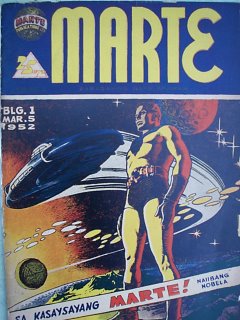 Marte Komiks#1 by Marte Publications Inc., Manila Philippines. Possibly the first all Sci-Fi komiks-magazine in the Philippines. Cover art by Nestor P. Redondo. I really loved the way Redondo composed this worms-eye view of the lead character! I am very impressed!
Marte Komiks#1 by Marte Publications Inc., Manila Philippines. Possibly the first all Sci-Fi komiks-magazine in the Philippines. Cover art by Nestor P. Redondo. I really loved the way Redondo composed this worms-eye view of the lead character! I am very impressed!
 Tsampiyon Komiks #4. "Domino" character by Ruben "Rubeny" Yandoc. Champion!
Tsampiyon Komiks #4. "Domino" character by Ruben "Rubeny" Yandoc. Champion!
 Being Ace Publications founder and first employee, Tony Velasquez got I.D. #1. It's the only Ace I.D. that carried his two signatures. The first signature as an employee and the second as General manager. Cool!
Being Ace Publications founder and first employee, Tony Velasquez got I.D. #1. It's the only Ace I.D. that carried his two signatures. The first signature as an employee and the second as General manager. Cool!  The first issue of Pilipino Komiks. A rare copy of this comic-magazine is now being preserved by the author.
The first issue of Pilipino Komiks. A rare copy of this comic-magazine is now being preserved by the author. Pilipino Komiks #15. Yearender issue 1947-48. Cover art by Tony Velasquez. Author's collection.
Pilipino Komiks #15. Yearender issue 1947-48. Cover art by Tony Velasquez. Author's collection.
 The first issue of the Hiwaga Komiks. The cover features Coching's illustration for Mars Ravelo's Berdugo ng Mga Anghel". Its regular illustrator, however, was the equally talented Elpidio Torres. Author's collection.
The first issue of the Hiwaga Komiks. The cover features Coching's illustration for Mars Ravelo's Berdugo ng Mga Anghel". Its regular illustrator, however, was the equally talented Elpidio Torres. Author's collection. The cover of the first issue of Espesyal Komiks featured a novel by Virgilio Redondo and illustration by his younger brother Nestor Redondo:"Reyna Bandida"
The cover of the first issue of Espesyal Komiks featured a novel by Virgilio Redondo and illustration by his younger brother Nestor Redondo:"Reyna Bandida"
 Hiwaga Komiks #29, 1951, with a magnificent cover art by Nestor Redondo. Author's collection.
Hiwaga Komiks #29, 1951, with a magnificent cover art by Nestor Redondo. Author's collection. Tony Velasquez, the Father of the Philippine Komiks Industry
Tony Velasquez, the Father of the Philippine Komiks Industry
 A 1923 issue of the Liwayway. Author's collection.
A 1923 issue of the Liwayway. Author's collection. A 1931 original cover art of the Liwayway by Tony Velasquez. One can readily see a heavy influence of Amorsolo on Velasquez early style. Author's collection.
A 1931 original cover art of the Liwayway by Tony Velasquez. One can readily see a heavy influence of Amorsolo on Velasquez early style. Author's collection.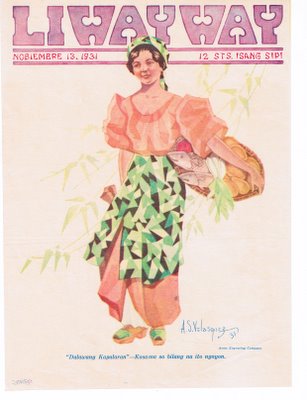 This is the offset print of the original art shown above. Author's collection.
This is the offset print of the original art shown above. Author's collection. A 1931 issue of Liwayway with a beautiful cover art by Tony Velasquez. Looks like Velasquez was influenced here by the American artist Norman Rockwell. Author's collection.
A 1931 issue of Liwayway with a beautiful cover art by Tony Velasquez. Looks like Velasquez was influenced here by the American artist Norman Rockwell. Author's collection.






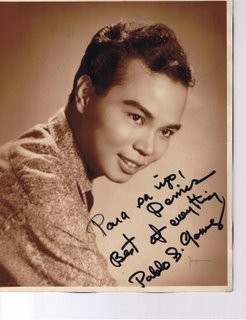







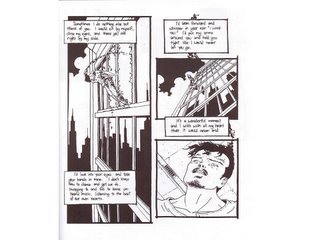
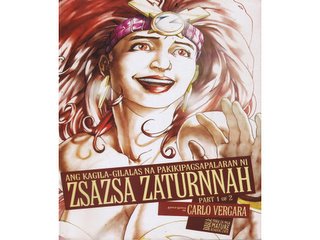
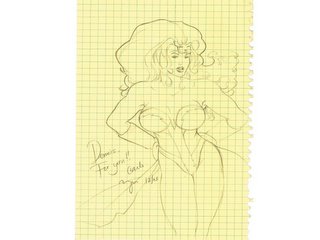

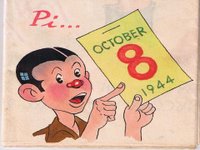



 On October 29, 1991, on the 81st birthday anniversary of Kenkoy creator Tony Velasquez, a tribute was celebrated in Mnila Hotel to honor the great Kenkoy Harabas, with Senator Heherson Alvarez as Guest Speaker. The funny thing was that during the ceremonies, Senator Alvarez insisted on emceeing the tribute himself. He said “I am such a big fan of Kenkoy, and I won’t pass this opportunity to be an emcee to this important event”. He also pledged to sponsor Tony Velasquez as a National Artist of the Philippines.
On October 29, 1991, on the 81st birthday anniversary of Kenkoy creator Tony Velasquez, a tribute was celebrated in Mnila Hotel to honor the great Kenkoy Harabas, with Senator Heherson Alvarez as Guest Speaker. The funny thing was that during the ceremonies, Senator Alvarez insisted on emceeing the tribute himself. He said “I am such a big fan of Kenkoy, and I won’t pass this opportunity to be an emcee to this important event”. He also pledged to sponsor Tony Velasquez as a National Artist of the Philippines.  Today Kenkoy is already seventy-six years old, but he has not grown old, he is still here….debonnair, bombastic, irreverent, hilarious, and best-loved…..I could always figure him out from the great multitudes of other comic characters he had helped paved the way in the Philippine comics scene…He grins and says mischievously….”Bay Gali! watsamara?”
Today Kenkoy is already seventy-six years old, but he has not grown old, he is still here….debonnair, bombastic, irreverent, hilarious, and best-loved…..I could always figure him out from the great multitudes of other comic characters he had helped paved the way in the Philippine comics scene…He grins and says mischievously….”Bay Gali! watsamara?” 